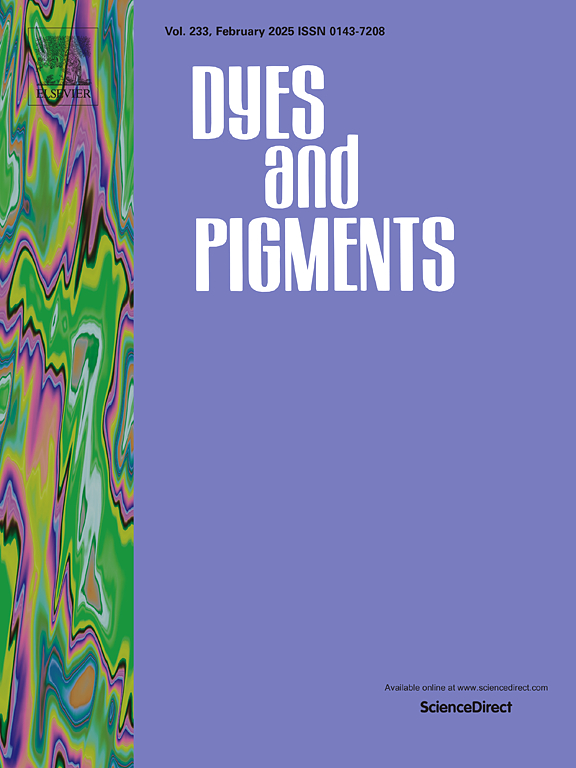Multi-resonance skeleton connected by rigid B- and N-embedded dioxygen-bridged units: Investigating structure–property relationships
IF 4.1
3区 工程技术
Q2 CHEMISTRY, APPLIED
引用次数: 0
Abstract
Two novel multi-resonance (MR) skeleton-based thermally activated delayed fluorescence (TADF) derivatives (NO-BN and BO-BN), incorporating rigid B- and N-embedded dioxygen-bridged units (BO and NO), were synthesized and characterized. The single-crystal structure of NO-BO shows that both MR and NO units exhibit good planarity and induce interesting head-to-tail π−π interactions. Notably, two compounds exhibit different intramolecular charge-transfer character according to theoretical calculations and photophysical results. The lowest excited singlet state of BO-BN mainly shows the local excited state (LE) characteristics of MR unit, accompanied by weak charge transfer state characteristics from MR Unit to BO unit, while only obvious CT state characteristics from NO unit to MR unit can be found in S1 of NO-BN. As a result, BO-BN (FWHM = 40 nm and ΦPL = 90 %) demonstates a narrower full width at half maximum (FWHM) and a higher emission efficiency than NO-BN (FWHM = 50 nm and ΦPL = 49 %). The compound BO-BN was selected as the guest emitter in a solution-processed OLED, achieving an excellent maximum external quantum efficiency of 24 %, along with saturated green emission at 510 nm. These findings provide a good understanding of the structure-property relationships in MR skeleton-based TADF materials.

求助全文
约1分钟内获得全文
求助全文
来源期刊

Dyes and Pigments
工程技术-材料科学:纺织
CiteScore
8.20
自引率
13.30%
发文量
933
审稿时长
33 days
期刊介绍:
Dyes and Pigments covers the scientific and technical aspects of the chemistry and physics of dyes, pigments and their intermediates. Emphasis is placed on the properties of the colouring matters themselves rather than on their applications or the system in which they may be applied.
Thus the journal accepts research and review papers on the synthesis of dyes, pigments and intermediates, their physical or chemical properties, e.g. spectroscopic, surface, solution or solid state characteristics, the physical aspects of their preparation, e.g. precipitation, nucleation and growth, crystal formation, liquid crystalline characteristics, their photochemical, ecological or biological properties and the relationship between colour and chemical constitution. However, papers are considered which deal with the more fundamental aspects of colourant application and of the interactions of colourants with substrates or media.
The journal will interest a wide variety of workers in a range of disciplines whose work involves dyes, pigments and their intermediates, and provides a platform for investigators with common interests but diverse fields of activity such as cosmetics, reprographics, dye and pigment synthesis, medical research, polymers, etc.
 求助内容:
求助内容: 应助结果提醒方式:
应助结果提醒方式:


